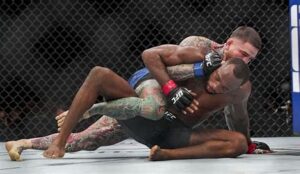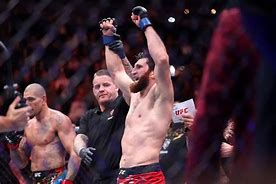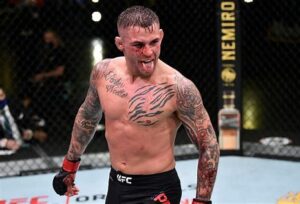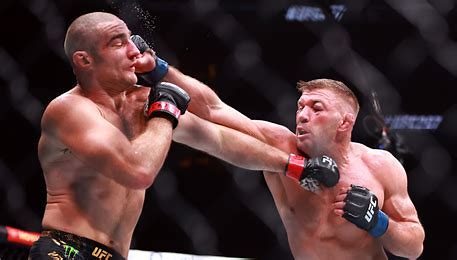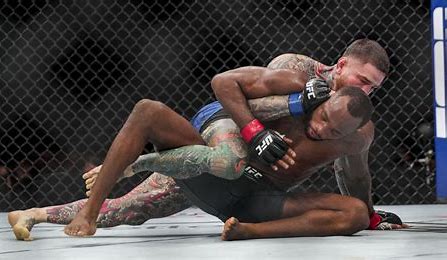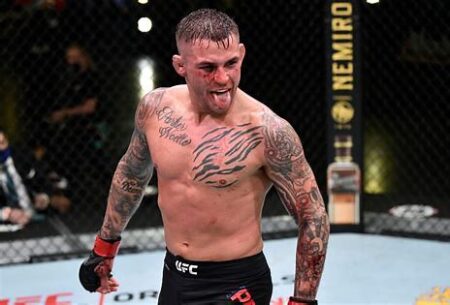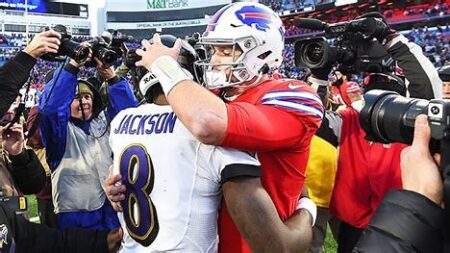Mixed martial arts is arguably the most unpredictable mainstream sport. Regardless of the analytics, styles, and statistics, the octagon is, as UFC lightweight Dustin Poirier put it, “the theater of the unknown.” At the highest level, any fighter can beat another, and all it takes is one mistake or one strike to land in the right place. A fighter is only as good as his/her last fight, and momentum is every bit as much of a factor as statistics. While Sean Strickland’s brutal honesty and entertaining personality have made him a fan favorite, he did himself no favors as he lost a convincing decision in a rematch against the defending UFC middleweight champion, Dricus Du Plessis. As popular as Strickland is, he probably wasn’t going to win this fight.
Make no mistake, Strickland is an elite fighter. But he isn’t a finisher. Not that he necessarily needs to be, but he hasn’t evolved his game much in recent memory. If you aren’t adapting, you’re doomed to fail. By the opposite side of the coin, Du Plessis fights like a disgruntled drunk at a tavern, but it just seems to work. As ugly as it might be, the man just continues to win. As with many debates in sports, two things can be true at the same time: Strickland needs to alter his game to change the result, and Du Plessis is just that good.
Sean Strickland is something of a conundrum. He does not fight like the person he says he is. Anyone who follows him probably knows what I am referring to. A man who prides himself on his masculinity, Strickland often references “going to war” in the cage. Whether it is his philosophy to his job, or the intense sparring sessions he alludes to in the gym, one would imagine that his fights would resemble Michael Chandler at middleweight. A true dog fight in a phone booth. Nothing could be further from the truth.
To be clear, fighting is incredibly dangerous at the highest level or otherwise. Those who step into the octagon deserve the highest respect. At the same time, the obvious has to be acknowledged, and the truth remains the truth, no matter who it comes from. There is a clear juxtaposition between how Strickland says he will fight and how he actually fights. Far from going to war, Strickland is a defensive minded fighter. There is absolutely nothing wrong with that, Strickland has some of the best striking defense in the UFC, with a creatively modified use of the Philly Shell to ward off attacks. This was best displayed in his title fight against the legendary Israel Adesanya. Strickland defeated Adesanya, a former Glory Kickboxing world champion, with a phenomenally executed defensive gameplan and just a simple jab and 1-2. But at some point, for lack of better phrasing, you have to throw down, like Strickland always says he will do. Against a brawler like Dricus, more needs to be done. Aside from perhaps his defense and cardio, Strickland can be at a disadvantage against a fighter who can match his pace and weather his jabs. His opponents know exactly what is coming. They don’t have to worry about the power of Alex Pereira, or the ground game of Paul Craig. Strickland doesn’t have much firepower, or anything offensively unique. While he may be at the top of the division, he just isn’t dangerous in comparison to his peers. He relies on defense, cardio, a jab and a teep kick. Prior to his upset victory over Adesanya, he was seen as somewhat of a gatekeeper. Good, but not deadly enough to pose a real threat.
To be frank, Strickland had no business winning, as he did not do much of anything. He was not creative in his approach, nor did he utilize all of his weapons. He is a volume fighter who relies on slowly chipping away at his opponents with his jab and teep. And… that’s really all he did for all 25 minutes. As a fan of Strickland, it was maddening to watch him get walked down and not display much in the way of urgency of adjustments. It generally takes more than what he displayed to win a UFC bout, especially for a championship belt. Strickland did not try to change up his toolbox, whether it was utilizing his BJJ black belt by attempting to take the fight to the ground, or trying different combinations. Strickland’s coach, Eric Nicksick, called for more aggression, but to no avail. Dricus was never in much danger during the contest. Strickland’s refusal to bite down on the mouthpiece and take risks proved to be his downfall.
Although the fight did not provide much entertainment from either fighter, it’s also time to award Du Plessis his flowers, if he hasn’t gotten them already. He kept Strickland on the back foot, varied his attacks, and broke his opponent’s nose in the fourth round with a right hand. Unlike the first fight, this was a convincing unanimous decision victory. Du Plessis is undefeated in the UFC, and despite being an underdog for many of his fights, he continues to win. His style does not look like it should work against the best in the world, although he does have a background in kickboxing. Visually, he appears sloppy, at times leaving his chin wide open and swinging for the bleachers, reminiscent of a bar fight. Rather than hamstring him, it tends to work to his benefit, as he is wildly unpredictable and difficult to gameplan for. He knows how to make a fight ugly and drag his opponents down with him. On paper, he seems very beatable, but MMA is the one sport where things are rarely what they seem. Dricus Du Plessis has now TKOed Robert Whittaker, a former champion, in a fight he was expected to lose. He then submitted Adesanya, a fighter who has exhibited sensational takedown defense during his career. In a momentum-based business, DDP has plenty of it on his side. It’s not about how you win, just if you win. With wins over three former middleweight champions, he cannot be overlooked any longer.
Make sure to get your Around the Felt Crewneck in our store!
